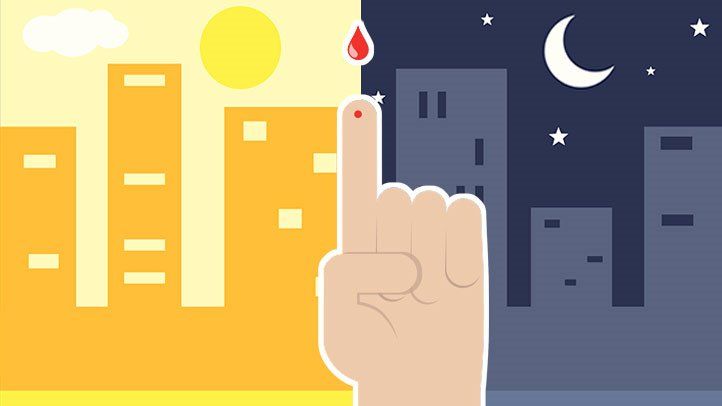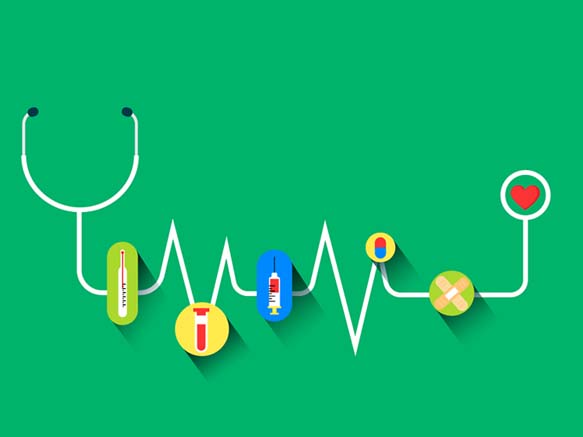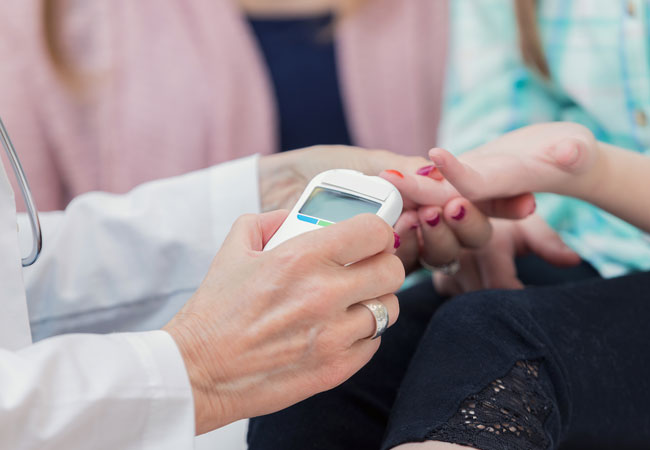Expect to see the number of people with blood sugar rise dramatically over the next 40 years. If nothing changes, according to the Centers for Disease Control and Prevention, as many as one in three adults could have the disease by 2050.

Currently 26 million American adults are living with blood sugar. Another 79 million are estimated to have Pre-diabetes, a condition marked by above-normal blood sugar levels that aren’t high enough to be diagnosed as type 2 diabetes. If there’s a silver lining to these alarming statistics, it’s that there’s plenty you can do to prevent the disease or slow the progression, including eating a balanced diet.
Everyone can benefit from a healthy eating plan aimed at containing Pre-diabetes, regardless of whether you’re at high risk for developing type 2 diabetes.
7 Golden Rules of Healthy Eating
Here are seven sound diet principles that can keep your blood sugars from creeping upward, among other health benefits.
1. Skip the sugary drinks. No sweet tea. No juice. No soda. No sweetened lemonade. No mocha latte coffee creations.Sugary drinks provide nothing more than empty calories, and they won’t help you feel full. “All the sugary drinks out there are a real risk factor for obesity,” she stresses.
2. Pull back on portions. You still can eat many of the foods you like, just have smaller amounts of them, Borcik says, adding that this is especially true for starchy foods like white rice, white potatoes, and pasta. Cut out high-calorie, junky snacks, and save your decadent desserts for special occasions. Remember that even healthy foods can lead to weight gain if you eat too much of them, and being overweight is a primary risk factor for type 2 diabetes.
3. Fill up on fiber. Eat plenty of high-fiber foods, including fresh vegetables and fruits, beans, and whole grains. Fiber helps you feel fuller longer and can help you eat less to avoid weight gain. At least half your plate should be fruits and vegetables that have been steamed or sauteed in healthy fats. Those veggies can be fresh, frozen, or canned. Just skip the canned vegetables with added salt.
4. Be choosy about fats. Your diet should have some fat, but opt for the healthiest sources: olive and vegetable oils, nuts, seeds, and avocado. Buy low-fat or fat-free dairy products such as reduced-fat cheeses, non-fat or low-fat yogurt, and skim milk.
5. Drink alcohol only in moderation. Men should have no more than two drinks a day, women no more than one. A drink is 12 ounces of beer, 5 ounces of wine, or 1.5 ounces of distilled spirits of 80-proof.
6. Choose lean meats. To easily identify lean red meats, look for cuts that have the word “round” or “loin” in their name, such as top round or pork loin. Even with these better-for-you picks, trim all visible fat. Opt for white-meat chicken or turkey without the skin. Adding fish to your diet two to three times a week is part of a diet that can help diabetes prevention. Bake, broil, roast, grill, or sauté rather than fry to keep it lean, Borcik says.
7. Stay hydrated. Drink plenty of water. People often mistake thirst for hunger, which can lead to overeating and weight gain. “Staying hydrated helps to lower your blood sugar, which you should do anyway.”
Diet and Exercise Go Hand-in-Hand
A Pre-diabetes regimen also includes regular exercise, both aerobics and strength training, to help you get to a healthy weight and maintain it once you’re there, says Borcik. Plan for at least 30 minutes a day. She suggests also sneaking exercise into your daily activities by parking farther from the entrance at the mall or your office building, using the stairs instead of elevators, and taking a walk around your workplace at lunchtime.

The best way to prevent type 2 diabetes is to follow a healthy lifestyle, which includes making smart food choices. If your diet could use a makeover, don’t wait until your doctor sounds the Pre-diabetes alarm to make changes. An ounce of prevention is worth a pound of cure.
Supplements
FENFUROTM is a group of furostanolic saponins, derived from fenugreek seeds (Trigonellafoenumgraecum) by innovative process. One of the most important properties of fenugreek seed extract is blood sugar level (BSL) lowering property. Various studies have investigated blood cholesterol-lowering and blood glucose lowering properties of fenugreek seed extract. FENFURO contains a rich variety of saponins and flavonoids. All of these substances are known to lower blood lipid levels and play valuable role in glucose regulation.
Fenfuro is protected by six international patents and is clinically evaluated with proven efficacy and safety.
The statement and product have not been evaluated by the FDA to diagnose, treat, cure or prevent any disease.














 With more than 62 million individuals currently diagnosed with the disease,
With more than 62 million individuals currently diagnosed with the disease, 


 Many people avoid the long-term problems of diabetes by taking good care of themselves. Work with your health care team to reach your ABC goals (A1C, Blood Pressure, Cholesterol): Use this self-care plan.
Many people avoid the long-term problems of diabetes by taking good care of themselves. Work with your health care team to reach your ABC goals (A1C, Blood Pressure, Cholesterol): Use this self-care plan.









